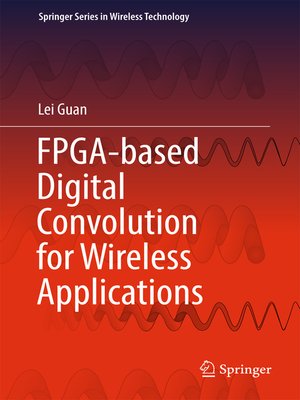FPGA-based Digital Convolution for Wireless Applications
ebook ∣ Springer Series in Wireless Technology
By Lei Guan

Sign up to save your library
With an OverDrive account, you can save your favorite libraries for at-a-glance information about availability. Find out more about OverDrive accounts.
Find this title in Libby, the library reading app by OverDrive.



Search for a digital library with this title
Title found at these libraries:
| Library Name | Distance |
|---|---|
| Loading... |
This book presents essential perspectives on digital convolutions in wireless communications systems and illustrates their corresponding efficient real-time field-programmable gate array (FPGA) implementations.
FPGAs or generic all programmable devices will soon become widespread, serving as the "brains" of all types of real-time smart signal processing systems, like smart networks, smart homes and smart cities. The book examines digital convolution by bringing together the following main elements: the fundamental theory behind the mathematical formulae together with corresponding physical phenomena; virtualized algorithm simulation together with benchmark real-time FPGA implementations; and detailed, state-of-the-art case studies on wireless applications, including popular linear convolution in digital front ends (DFEs); nonlinear convolution in digital pre-distortion (DPD) enabled high-efficiency wireless RF transceivers; and fast linear convolution in massive multiple-input multiple-output (MIMO) systems.
After reading this book, students and professionals will be able to:
· Understand digital convolution with inside-out information: discover what convolution is, why it is important and how it works.
· Enhance their FPGA design skills, i.e., enhance their FPGA-related prototyping capability with model-based hands-on examples.
· Rapidly expand their digital signal processing (DSP) blocks: to examine how to rapidly and efficiently create (DSP) functional blocks on a programmable FPGA chip as a reusable intellectual property (IP) core.
· Upgrade their expertise as both "thinkers" and "doers": minimize/close the gap between mathematical equations and FPGA implementations for existing and emerging wireless applications.







